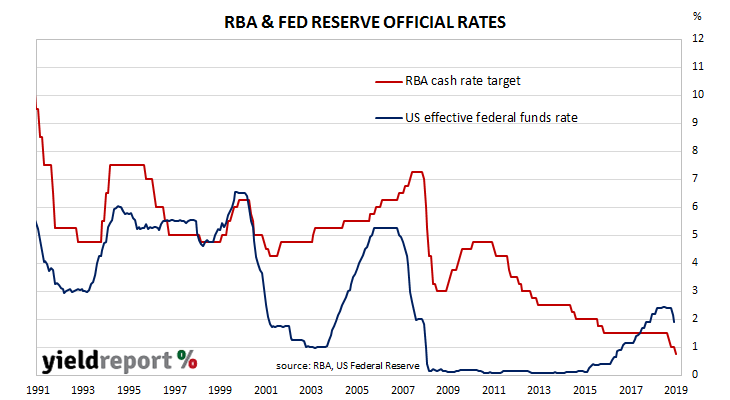After thirty board meetings in which the rate had been held unchanged, the RBA lowered the cash rate in June from 1.5% to 1.25%. It then reduced again, to 1.00%, in July. Now it has cut the cash rate again, this time to 0.75%. Since the GFC, central banks around the world have refrained from raising their respective official rates as their countries’ economies improved. Prior to the GFC, when a country appeared to be on the verge of recession, the central bank would slash its official rate. It would then gradually raise this rate as the economy recovered, usually within two years of its last rate cut. As spare capacity diminished, the official rate would be raised so as to encourage savings instead of consumption and thus avoid overheating the economy as demand outstripped supply. Eventually, the cycle would repeat.
Since the GFC, central banks around the world have refrained from raising their respective official rates as their countries’ economies improved. Prior to the GFC, when a country appeared to be on the verge of recession, the central bank would slash its official rate. It would then gradually raise this rate as the economy recovered, usually within two years of its last rate cut. As spare capacity diminished, the official rate would be raised so as to encourage savings instead of consumption and thus avoid overheating the economy as demand outstripped supply. Eventually, the cycle would repeat.
Not this time. During the GFC, the cash rate target was cut drastically and, in conjunction with additional government spending, the Australian economy avoided recession, although it did slow significantly. The RBA appeared to be holding to standard central bank doctrine when it began raising rates in 2010. However, it then began an experiment.

